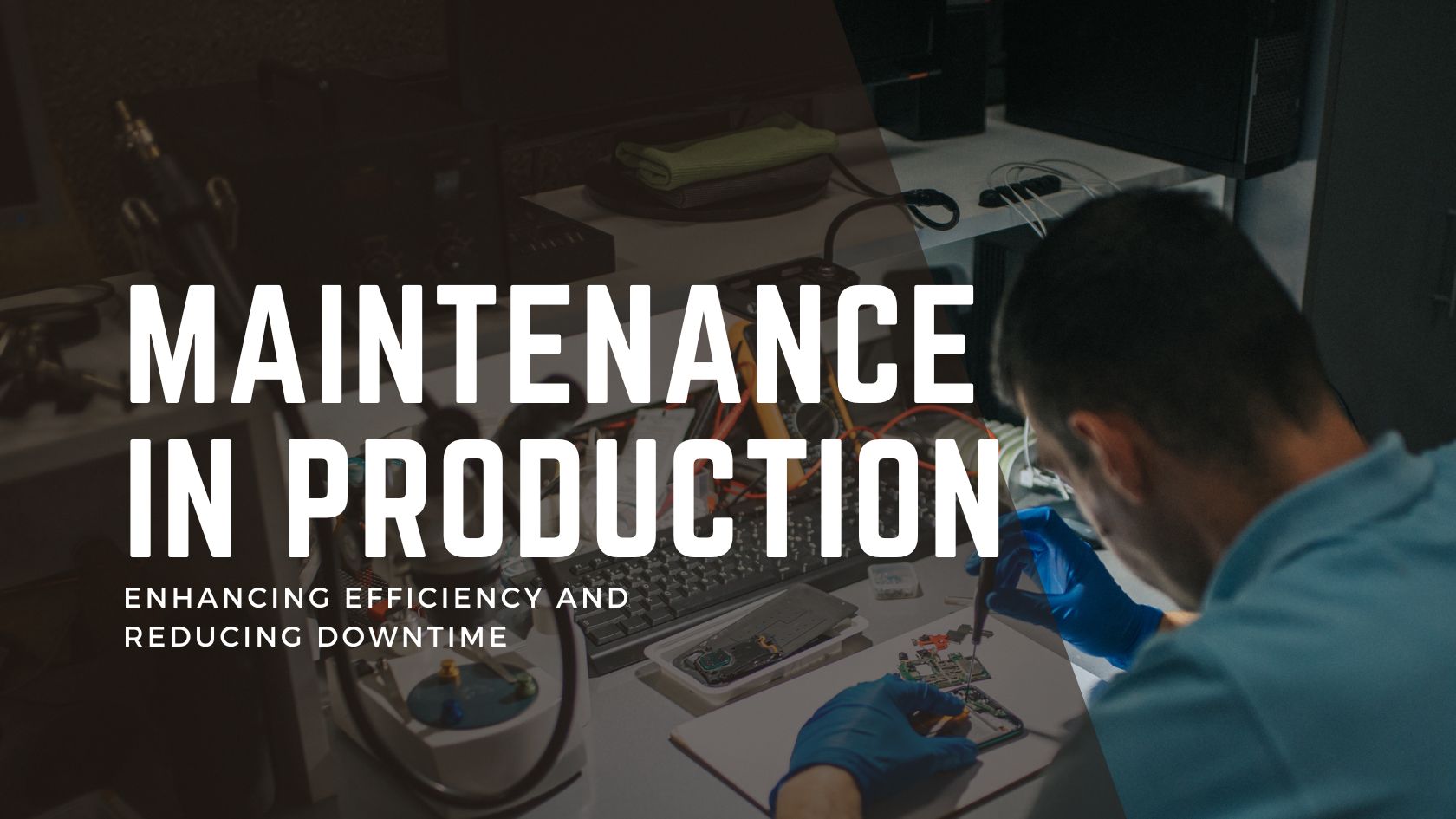Maintenance in Production: Enhancing Efficiency and Reducing Downtime
In today’s fast-paced industrial world, the concept of maintenance in production has become more critical than ever. The maintenance of production systems is no longer just a necessity; it is a strategic function that can greatly impact a company’s productivity, profitability, and overall competitiveness. For industries reliant on automation and production systems, such as those served by companies on Automa.Net implementing effective maintenance strategies can reduce unplanned downtime, extend machinery lifespan, and ensure the smooth operation of production lines.
This article explores the essential aspects of maintenance in production, including preventive, predictive, and reactive maintenance strategies, the importance of technology and automation in maintenance practices, and how companies can leverage these strategies to optimize their production processes.
The Importance of Maintenance in Production
Maintenance in production is vital for ensuring that machinery and equipment are functioning correctly and efficiently. Without proper maintenance, production equipment is more likely to fail, leading to unplanned downtime, production delays, and increased costs. The importance of an effective maintenance strategy cannot be overstated, as it directly impacts the following areas:
- Operational Efficiency: Regular maintenance ensures that machinery operates at optimal performance, minimizing the likelihood of breakdowns or inefficiencies.
- Cost Savings: Preventative maintenance can prevent costly repairs and replacements. It also reduces the energy consumption of malfunctioning machines, which often operate less efficiently.
- Safety: Well-maintained equipment is safer for operators, reducing the risk of accidents or injuries on the production floor.
- Product Quality: Consistently well-maintained machinery produces higher-quality products, minimizing defects and ensuring customer satisfaction.
- Compliance: Industries subject to regulations and standards often require strict maintenance schedules to comply with safety and quality standards.
Types of Maintenance in Production
1. Preventive Maintenance
Preventive maintenance (PM) is a proactive approach to equipment upkeep, involving regularly scheduled inspections, servicing, and minor repairs. The goal of preventive maintenance is to detect and fix issues before they cause equipment failure, which can lead to unplanned downtime or safety hazards.
Key Characteristics of Preventive Maintenance:
- Scheduled intervals based on time or usage metrics (e.g., hours of operation).
- Routine checks and inspections.
- Parts replacement before failure occurs.
2. Predictive Maintenance
Predictive maintenance (PdM) leverages data and monitoring technologies to predict when equipment failure is likely to occur. This approach uses condition-based monitoring, which relies on sensors and data analytics to assess the real-time condition of machinery and predict when maintenance is required.
Key Characteristics of Predictive Maintenance:
- Utilizes real-time data from equipment sensors.
- Maintenance is performed based on the actual condition of equipment.
- Advanced technologies like machine learning and IoT sensors are used.
3. Reactive Maintenance
Reactive maintenance, or “run-to-failure” maintenance, involves repairing or replacing equipment only after it has failed. This method can lead to costly production losses, but may be suitable for non-critical equipment.
Key Characteristics of Reactive Maintenance:
- No maintenance performed until failure occurs.
- Higher repair or replacement costs, especially for critical equipment.
- Potential for unplanned downtime and production delays.
The Role of Technology in Modern Maintenance Practices
1. Internet of Things (IoT)
The IoT has revolutionized predictive maintenance by enabling continuous monitoring through sensors. IoT devices can collect data related to machine performance, such as temperature, vibration, and operational speed, which can be analyzed to predict potential failures.
2. Artificial Intelligence (AI) and Machine Learning (ML)
AI and ML have transformed predictive maintenance, allowing for the analysis of large datasets to uncover patterns and trends not easily detected by humans. These technologies can predict equipment failures with greater accuracy, improving just-in-time maintenance strategies.
3. Automation
Automation in maintenance reduces the need for human intervention and improves the precision and efficiency of tasks. Automated systems can monitor, diagnose, and even perform certain maintenance tasks without manual input.
Key Considerations for Implementing a Maintenance Strategy
- Assessing Equipment Criticality: Prioritize maintenance based on the importance of equipment in the production process.
- Balancing Costs and Downtime: Find the right balance between the cost of maintenance and the potential cost of downtime.
- Leveraging Data Analytics: Invest in systems that gather and analyze equipment data to optimize maintenance decisions.
- Training and Skill Development: Ensure that maintenance teams are trained to handle advanced equipment and technologies.
Conclusion
Maintenance in production is a critical function that directly impacts productivity, profitability, and overall competitiveness. With the right combination of preventive, predictive, and reactive maintenance strategies, and the adoption of advanced technologies like IoT and AI, companies can reduce downtime, extend equipment lifespan, and maintain a smooth production process.
Platforms like Automa.Net can assist industries in streamlining their maintenance efforts by providing access to automation parts and solutions that ensure production lines remain operational and efficient.
Also, what’s important in the Automa.Net Business Directory is where you can find hundreds of Maintenance companies worldwide. Use the rich directory of companies.
